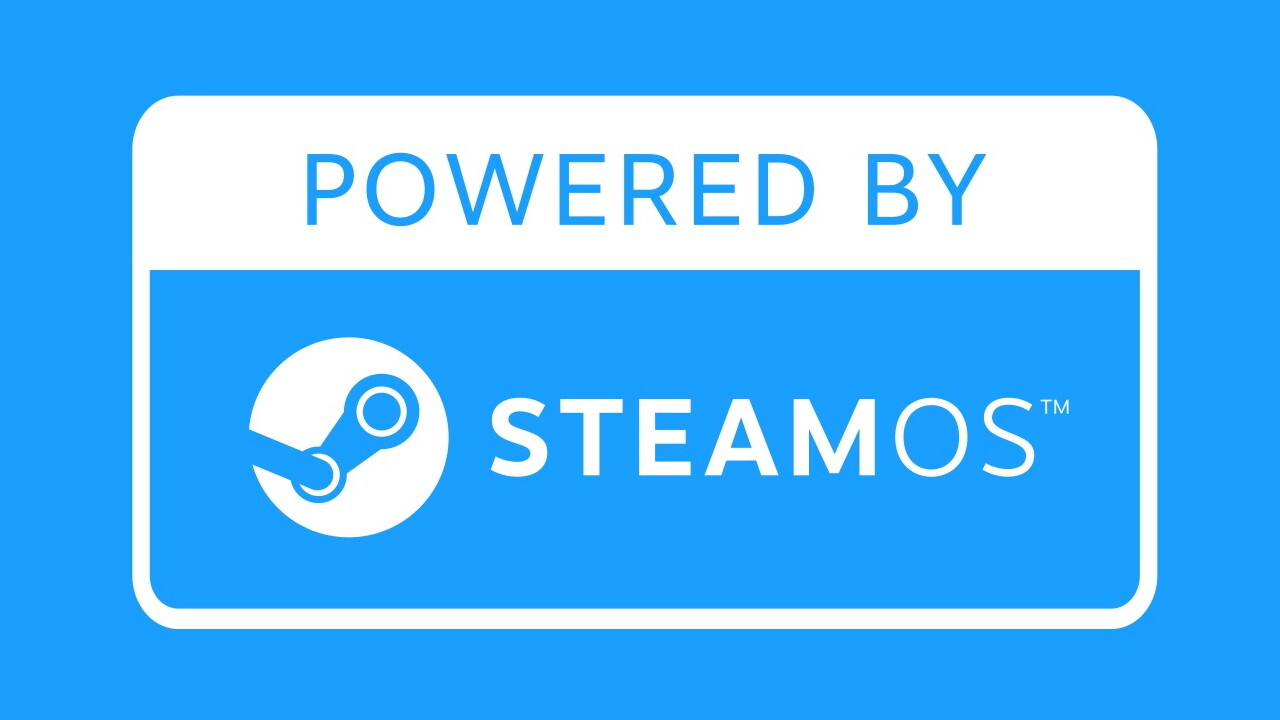Retro Games – The Spectrum in the test: The resurrection of an icon of the British video games industry 73 comments
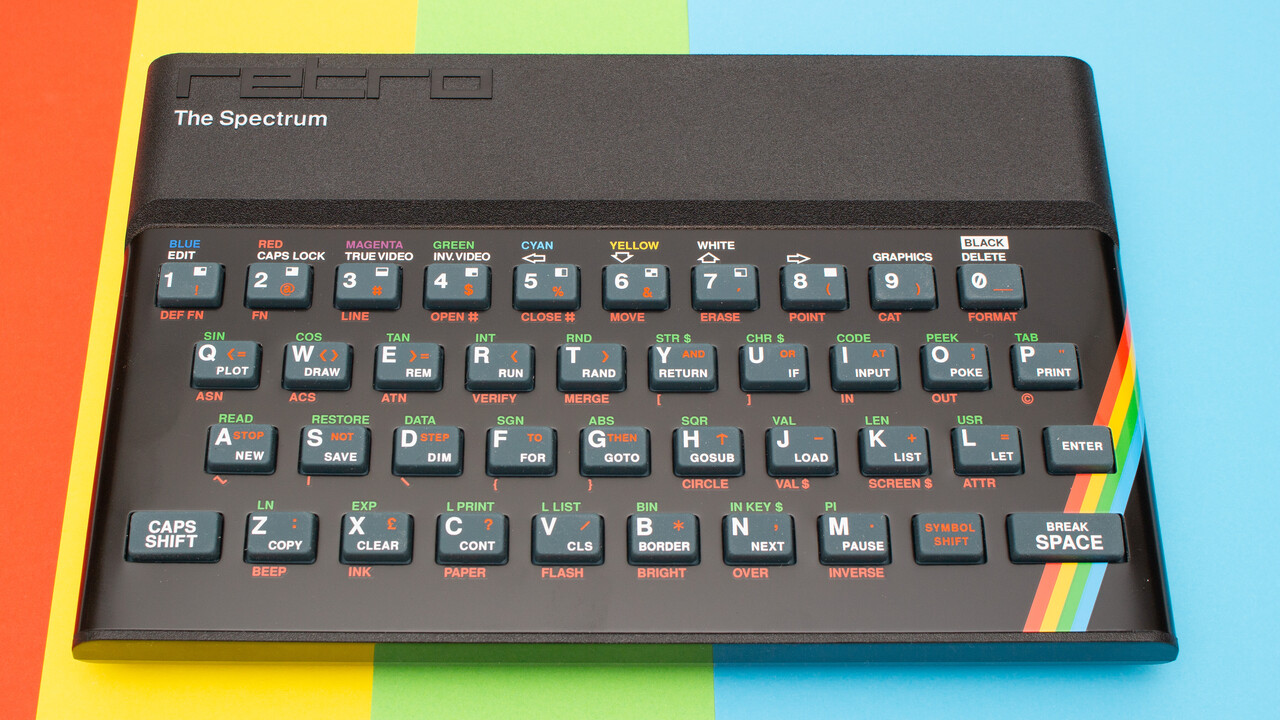
With The Spectrum, Retro Games brings back one of the most important computers in its original size and with a rubber keyboard. The 48 pre-installed games also include some classics as well as new titles, one of which was released around 40 years after the ZX Spectrum was released. Overall, the performance was successful.
Table of contents 1 The resurrection of an icon of the British video game industryClassics in their usual form Old on the outside, new on the inside 2 Initial setup and built-in gamesConfiguring The Spectrum Interesting games included 3 Integrate your own titles and play on the SpectrumRetro system Can be expanded with your own games Play with The Spectrum 4 Sinclair-Basic and ConclusionThe basics Conclusion
Classic in its usual form
After the British manufacturer Retro Games, known for its retro consoles and computers, once with the TheC64 mini, the TheC64 with a working keyboard (test), the miniature version of the Amiga 500 called TheA500 (test), which according to the A full-size version with a real keyboard could also appear, and recently attracted attention with the The400 Mini, the mini version of the Atari 400 and 800 (test). it was only a matter of time before the company turned its attention to the classic from the British Isles. The Spectrum resembles the well-known model in many ways
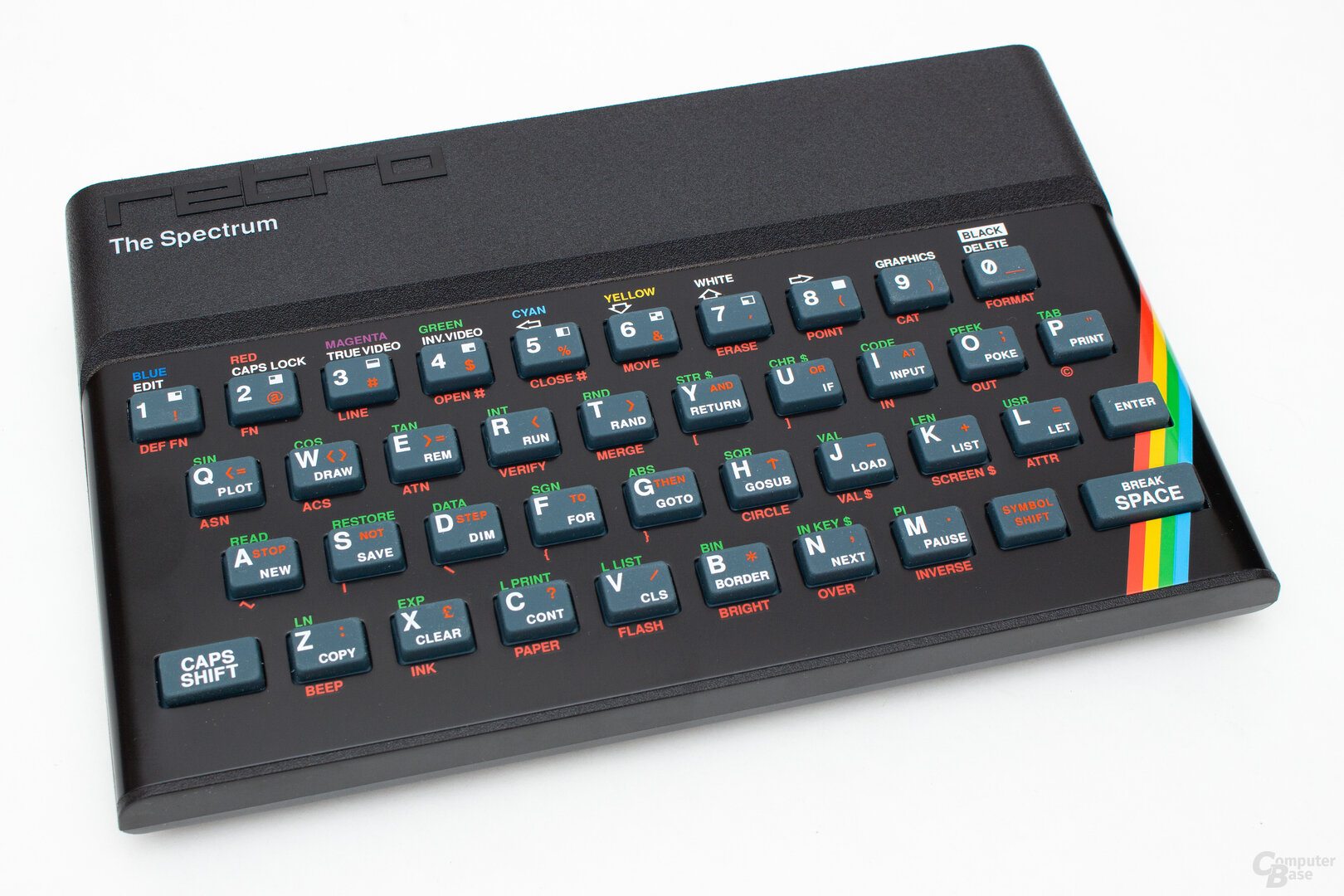 Retro Games’ decision not to release the new model in the usual mini version, but instead to present an identically sized variant with a functional keyboard, was perhaps mainly influenced by the small size of the original. Therefore, this The Spectrum also measures 23 × 14 × 3 cm.
Retro Games’ decision not to release the new model in the usual mini version, but instead to present an identically sized variant with a functional keyboard, was perhaps mainly influenced by the small size of the original. Therefore, this The Spectrum also measures 23 × 14 × 3 cm.
Visually, the replica largely follows the model common in Great Britain. The ZX Spectrum’s signature keyboard with several rubber keys was also adopted, giving users an idea of how games were created with the small computer in many British children’s bedrooms at the time. The fonts and colors applied are also closely based on the original.
However, understandable concessions to modernity have been made when it comes to connections. Compared to the original, The Spectrum lacks an expansion port, tape recorder connection, and TV connection on the back; instead, a USB-C connection has been integrated and the power supply is only 5 volts at one amp instead of the original 9 volts required.
The connections on The Spectrum are very different from the original
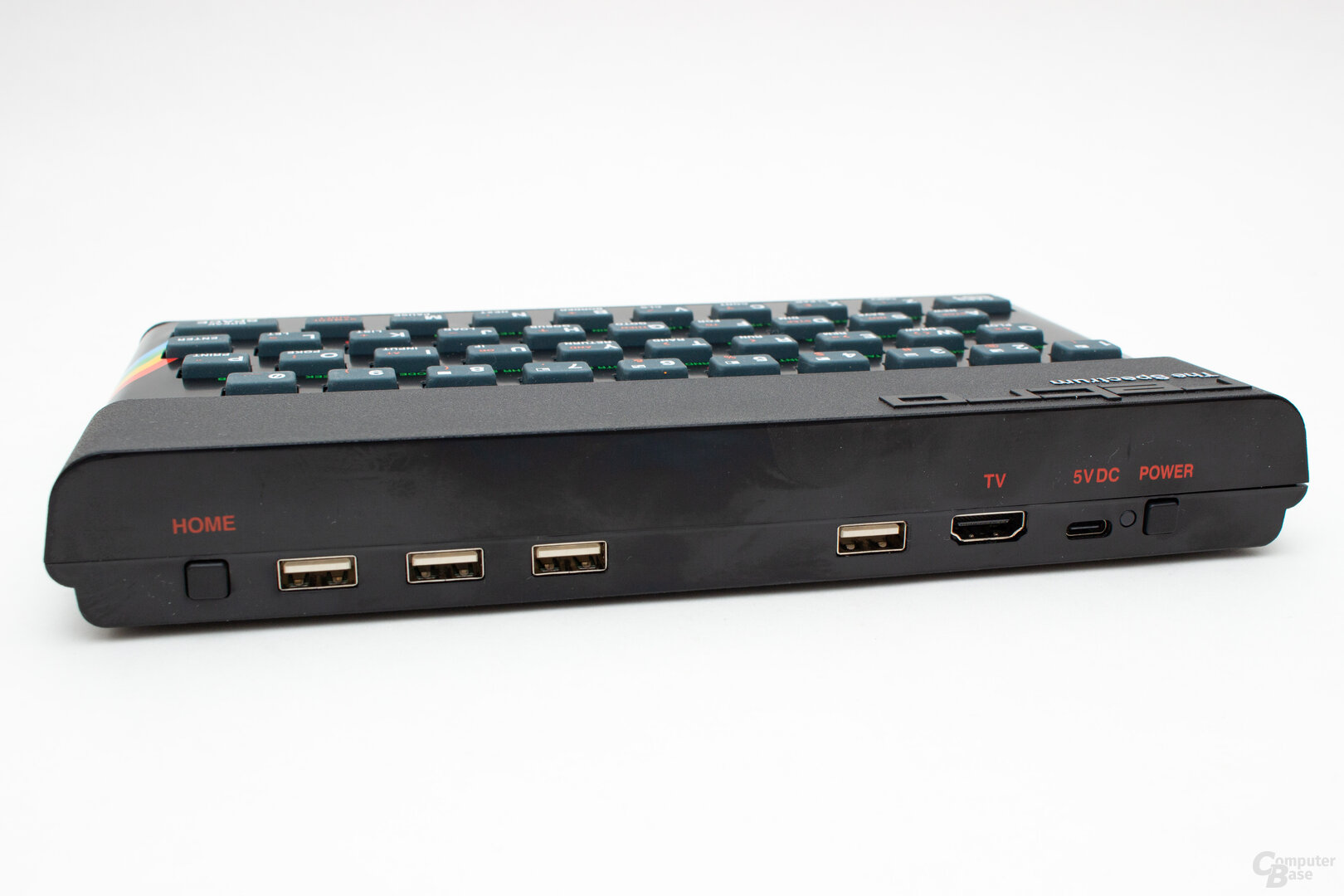 The Sinclair also offers four USB interfaces that can be used for additional software delivered via a USB source as well as input devices such as joysticks or keyboards. The content is not output via an antenna cable as before, but via a more modern HDMI connection. Since programs of the time were not sent to the monitor in high resolution anyway, the device’s output is limited to 720p – i.e. 50 or 60 Hz.
The Sinclair also offers four USB interfaces that can be used for additional software delivered via a USB source as well as input devices such as joysticks or keyboards. The content is not output via an antenna cable as before, but via a more modern HDMI connection. Since programs of the time were not sent to the monitor in high resolution anyway, the device’s output is limited to 720p – i.e. 50 or 60 Hz.
Unlike previous versions, the package, which costs around 100 euros, does not contain a joystick or other input devices. However, as usual, an HDMI cable and a USB cable are included in the delivery, while buyers must purchase an AC adapter separately for power supply – which was already common with previous Retro Games products.
A special feature in the form of a tribute is hidden inside the Retro Spectrum and is only revealed to the user who unscrews the device. You will notice the following engraving on the plastic cover which forms the back of the keyboard:
In memory of
Sir Clive Sinclair
1940 – 2021
And
Rick Dickinson
1957 – 2018
Thank you both
from the RGL team
Rick Dickinson is the designer who designed the body of the ZX81 and received the Design Council Award in 1981. This in turn was based on the work of John Pemplons and his design of the forerunner ZX80. Dickinson continued his work by combining, in his own words, the old design with the advantages of the technical advances of the time. Among other things, the ZX81 used the injection molding process instead of the previously used vacuum process, which allowed greater freedom in terms of shape and detail.
The respect shown to Sir Clive Sinclair and Rick Dickinson can only be seen by those looking inside The Spectrum.
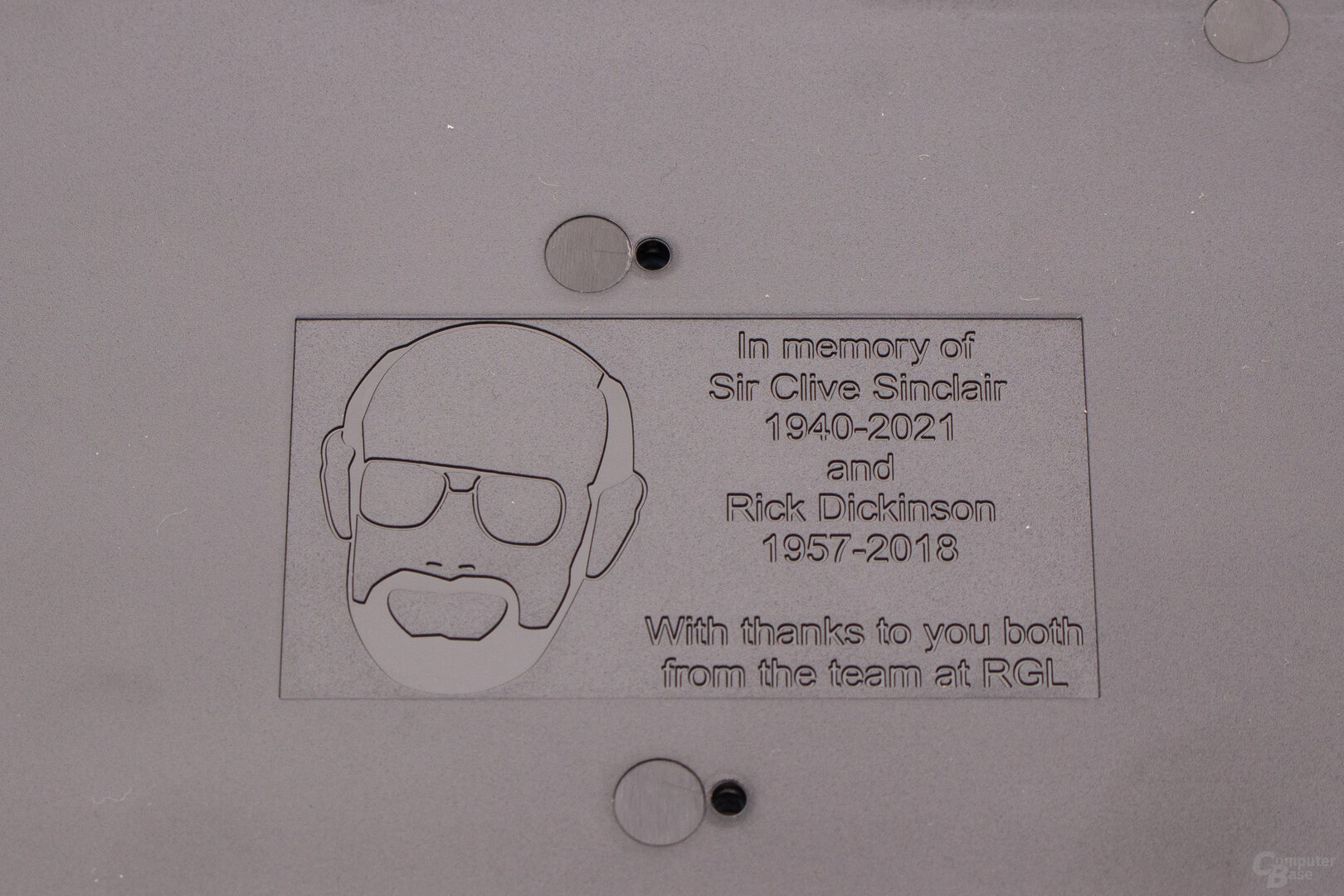 Retro Games being an English company, the engraved dedication once again highlights the historical importance and high status that Sinclair computers still enjoy in Britain.
Retro Games being an English company, the engraved dedication once again highlights the historical importance and high status that Sinclair computers still enjoy in Britain.
Old on the outside, new on the inside
While in the original a Zilog ZX80A with a maximum clock of 3.5 MHz was responsible for the required computing power, the retro computer is based on the proven basis that was already used in the The400 Mini. This is an AllWinner H3 SoC, equipped with four Cortex-A7 cores and operating at a clock speed of 1.296 GHz. This means that the retro computer achieves around 370 times the computing power compared to the original. There are also 2 GB of internal memory and 512 MB of RAM. A Mali-400 MP2 GPU provides the graphics output, enabling 720p resolution. Given that the ZX Spectrum’s programs were only a few kilobytes in size at the time, today’s equipment can certainly be considered oversized.
The material has changed a lot on The Spectrum compared to the original
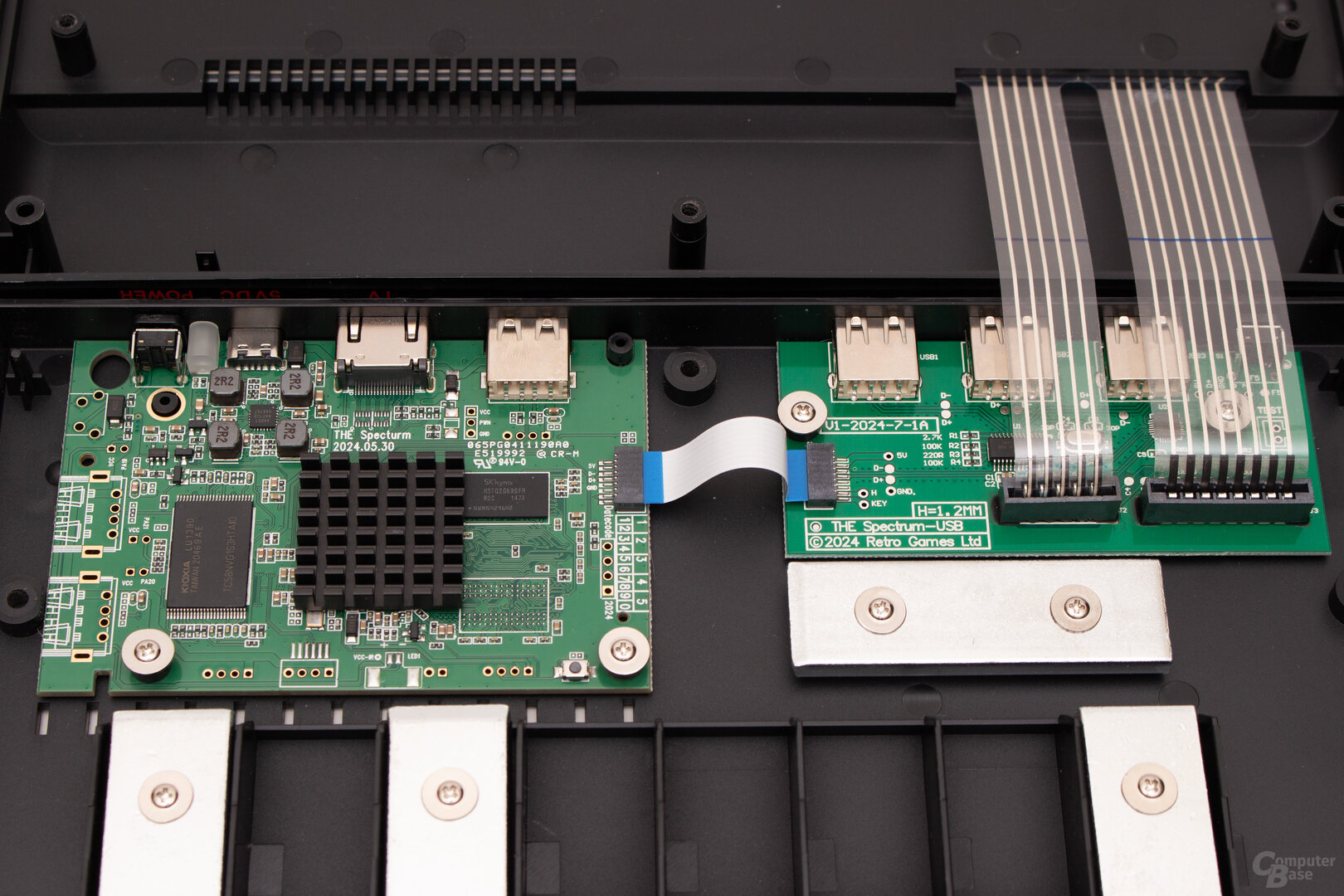 In terms of software, The Spectrum only supports the Spectrum 48K (including the 16K variant) and 128K versions as well as +2 and +2A. Unlike retro computers like the TheC64, which could also emulate the VC 20, or the The400, which supported not only the software of the Atari 400 and 800 but also their successors like the Atari 800 XL as well as the 130 XE and the Atari 5200., or the TheA500, which includes both the Amiga 500 and the Amiga 600 and Amiga 1200, The Spectrum is limited exclusively to the emulation of the ZX Spectrum and leaves aside other Sinclair models such as the ZX80 or the ZX81.
In terms of software, The Spectrum only supports the Spectrum 48K (including the 16K variant) and 128K versions as well as +2 and +2A. Unlike retro computers like the TheC64, which could also emulate the VC 20, or the The400, which supported not only the software of the Atari 400 and 800 but also their successors like the Atari 800 XL as well as the 130 XE and the Atari 5200., or the TheA500, which includes both the Amiga 500 and the Amiga 600 and Amiga 1200, The Spectrum is limited exclusively to the emulation of the ZX Spectrum and leaves aside other Sinclair models such as the ZX80 or the ZX81.
However, for emulation of The Spectrum, Retro Games is not relying on an existing emulation as it did with TheC64, which used a modified version of the popular “Vice” emulator. Chris Smith, Chief Technology Officer of Retro Games, was responsible for developing the software framework. Smith, a recognized expert on ZX Spectrum hardware, is the author of the book “The ZX Spectrum ULA,” which covers the ZX Spectrum’s Uncommit Logic Array (ULA) core chip. This chip was originally responsible for the screen display, audio output and tape recorder interface and thus formed, alongside the Z80 processor, the heart of the ZX Spectrum. The ULA was primarily created to lighten the load on the Z80, which noticeably increased the computing power compared to its predecessor at almost the same clock speed. Given his expertise, it can be assumed that Smith was able to develop an emulator from scratch, specifically tailored to the ZX Spectrum’s hardware.
Page 1/4 Next page
Initial Setup and Built-in Games Topics: Retro Gaming PC Systems Retro Games Preview Images

A lifelong video game enthusiast, Julien reviews the latest releases and explores the technologies transforming the gaming world.

